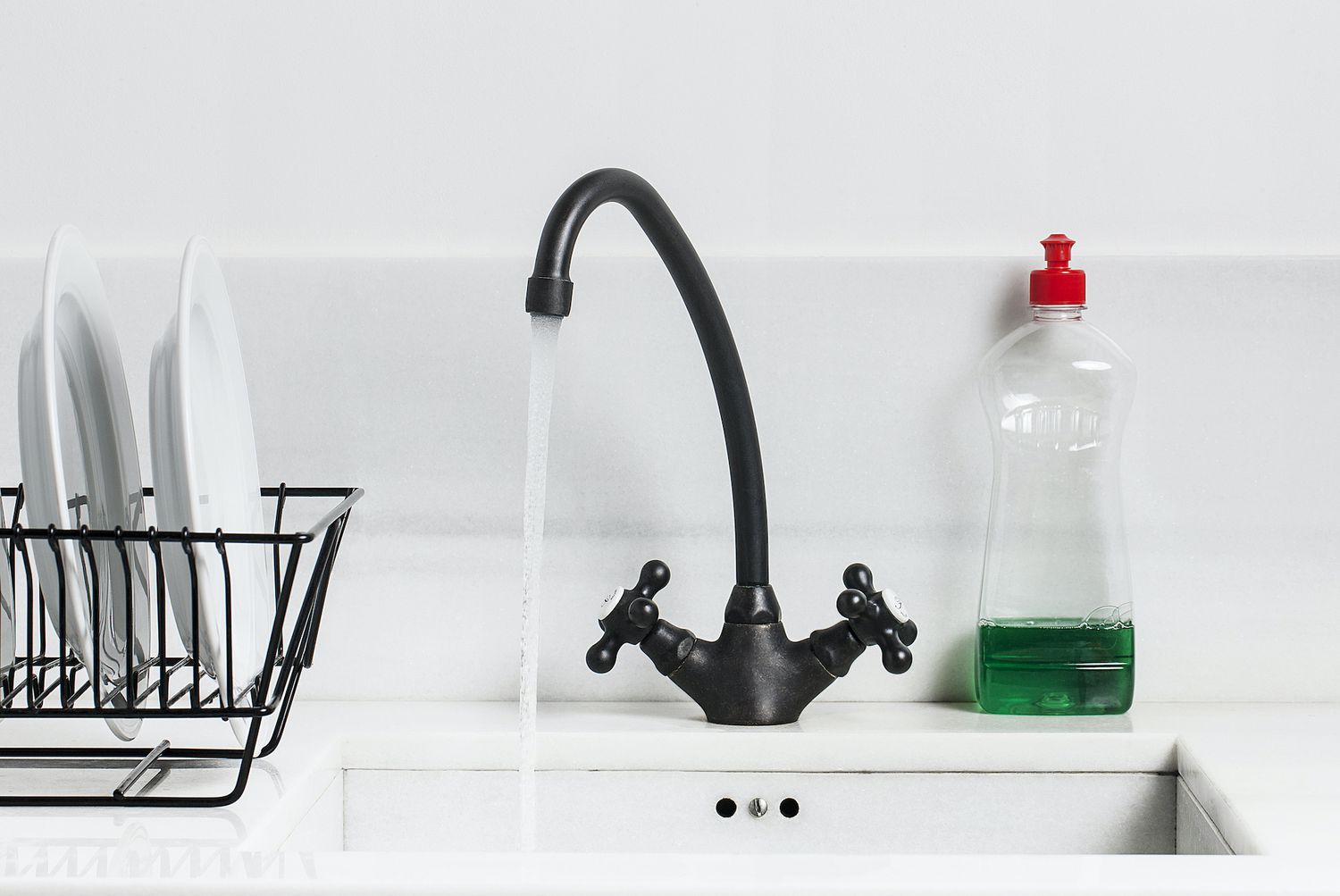[ad_1]
When my husband and I bought our first home, it came with a white farmhouse-style sink. That sink was, quite possibly, my favorite part of that entire house. I cleaned it diligently every day because it got grungy—white tends to do that—but it also looked fabulous when it gleamed. We moved away from that house, but when it came time to renovate a kitchen in another home, installing a wide, low farmhouse sink was a top priority.
Having a great sink can make life in the kitchen so much easier. When you have room to put dishes, to wash ingredients, to drain cooked food, and to dry whatever you’ve washed, the processes of cooking and cleaning up become more streamlined and less stress-inducing. Regardless of what kind of sink you have (most people’s are stainless steel), it does have to be clean to be usable—and getting a well-used kitchen sink to optimal cleanliness takes a bit of elbow grease.
Fortunately, there is lots of expert advice for doing so. Baking soda is the darling of the green cleaning world for good reason, and it’s no exception in this case. It provides just enough abrasion to scrub both stainless steel and a porcelain sink without causing the damage that more aggressive cleaners and metal scrub brushes can.
Melissa Maker, founder of Toronto cleaning company Clean My Space, recommends dousing the drain with baking soda, then spraying the entire sink generously with all-purpose cleaner before dousing with more baking soda. I’ve been using Branch Basics kitchen cleaner for this, and it works wonders. With a vinegar-soaked toothbrush, tackle the edges of the sink and the crevices of the drain, then get a soft scrub pad to clean the basin.
Rinse thoroughly with hot water, then buff with a microfiber cloth. If you’ve missed a spot, give it a quick spray with white vinegar and use the microfiber cloth to buff it away. Want some extra shine? Add a teaspoon of olive oil and rub it all over the sink basin.
Some experts mix baking soda with dish soap and rub that paste all over the sink with a soft cloth. A method suggested by Better Homes & Gardens is to douse the cut half of a lemon in salt and use that to tackle stains or rust marks. If you don’t have baking soda or want a little bit more oomph, try Bon Ami Powder Cleanser, a winner in Treehugger’s Green Cleaning Awards.
Don’t forget the faucet! Maker recommends filling a small ziplock bag with white vinegar and using an elastic band to attach it to the faucet head. Leave for several hours or overnight to dissolve hard water buildup. You can wrap a vinegar-soaked cloth around the tap handle to break up any soap scum or buildup that occurs there; scrub with a cleaning toothbrush after you’ve finished dealing with the basin, and you’ll find it comes off easily. Do the same with the drain basket or put it in the dishwasher.
It’s important to keep sinks clean and dry for the most part. Avoid leaving acidic ingredients sitting for prolonged periods of time, as these can damage the finish. Food residue in general will cause bacterial growth and smelliness, so it’s a good idea to make cleaning your sink a daily habit. You don’t always have to do a deep clean as described above—maybe aim for that once a week—but do try to scrub with dish soap and a soft sponge at least once per day. And please, always empty out the drain basket! No one wants to use a sink with soggy food in the bottom.
One little add-on that has made my sink more user-friendly is a bottom rack in one of the basins. Some people use these for dishes, to avoid marking the bottom of the basin with heavy pots and pans, but I prefer to use it as an in-sink drying rack. This is a visual game-changer because I no longer have a stack of dishes drying in a rack on the counter; they’re tucked into the sink, away from view, but they dry just as quickly. Anyone with a double basin sink should think about getting one.
I have an additional small wooden drying rack that I got from a beeswax wrap company in Vermont that sits next to the sink. It’s perfect for drying those beeswax-infused cloths and any ziplock or milk bags I’ve washed out (it’s a Canadian thing), as well as water bottles and insulated coffee cups, and it folds away easily whenever I want to tackle kitchen clutter.
If you haven’t prioritized cleaning your sink in the past, I highly recommend it. It will set the mood for the entire room, more so than cleaning the counters or fridge can ever do. A clean sink is an invitation to drink more water (while standing in front of it, admiring its gleam) and to wash stray dishes.
Once you start cleaning your sink regularly, you’ll find yourself doing it all the time. It’s one of those small habits, like making your bed, that reliably changes a room’s atmosphere for the better.
[ad_2]
Source link
